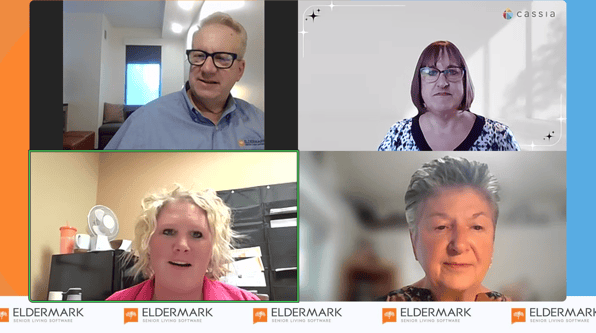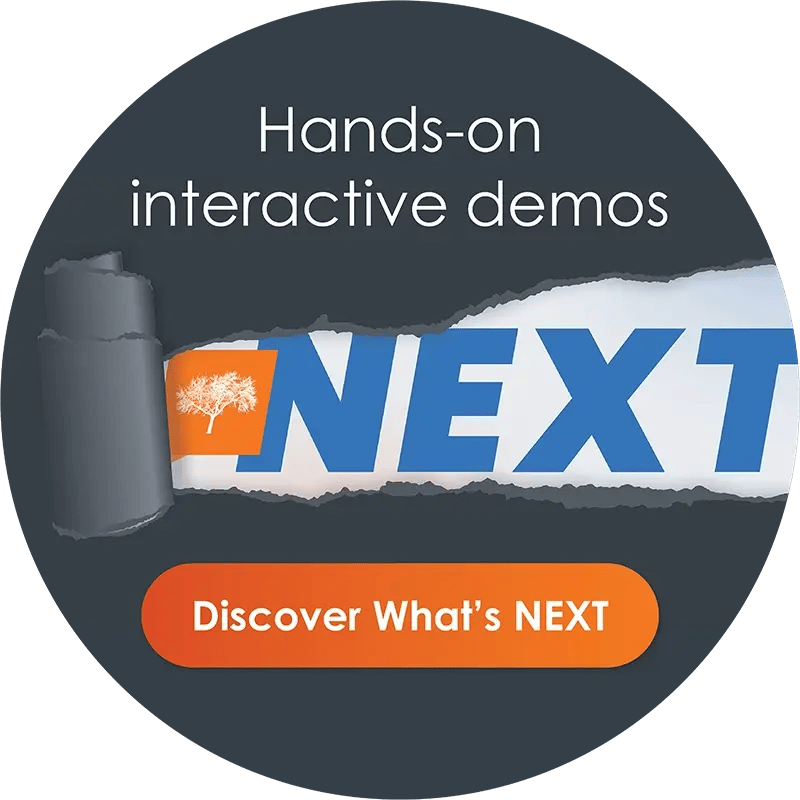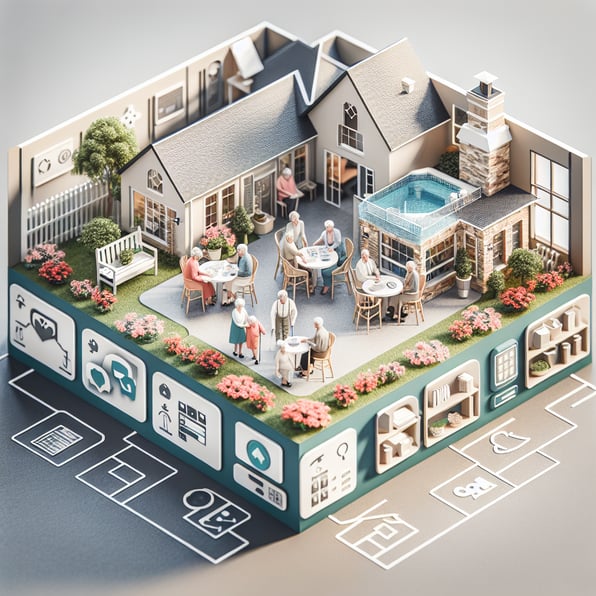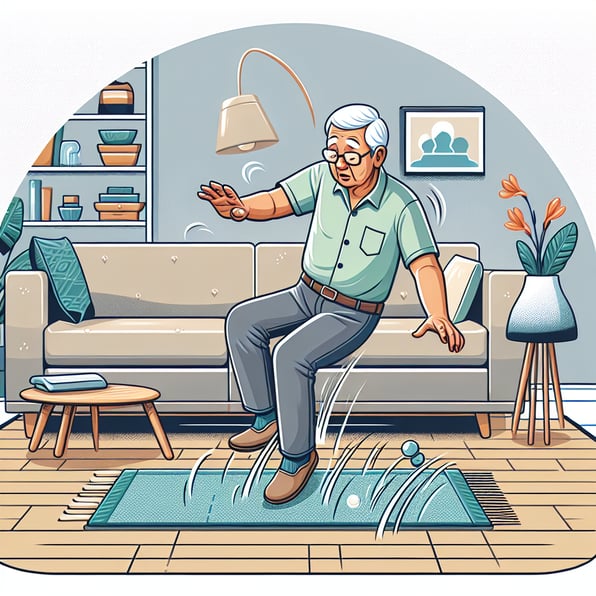Webinar: How Tech Partners Help You Navigate Compliance in Senior Living

In the senior living industry, regulations and compliance needs are ever-changing. Teams must stay vigilant to ensure total compliance and avoid costly penalties. How can software and tech partners help make that simpler? What should senior living teams expect from their software partner in helping them stay compliant? How have compliance needs evolved for assisted living communities since COVID?
In our most recent webinar in the Leadership Forum Series, Staying Ahead: How Tech Partners Help You Navigate Compliance in Senior Living, we covered that, and more! Hosted by our very own Chief Client Officer, Mark Anderson. Our panel comprising Nanette Wilkins from Benicia Senior Living, Angie Mastin from Monarch Healthcare Management, and Brenda Liker from Cassia, discussed the pivotal role of technology in enhancing regulatory compliance within senior living communities. The conversation centered around how technological advancements can streamline compliance efforts in an increasingly complex regulatory environment.
Key Highlights
- The Importance of Seamless Compliance: Brenda Liker emphasized that compliance should be effortless and that technology needs to integrate workflows that guide staff towards regulatory adherence without unnecessary complications. “Compliance really needs to be effortless,” she stressed, advocating for systems (like Eldermark) that centralize all necessary tools in one place.
- Changing Regulatory Landscape: As regulations have escalated post-pandemic, the panelists shared their experiences adapting to these new standards, as well as their expectations for technology helping them along the way. With the introduction of acuity-based staffing tools, technology has become essential for managing these complex requirements effectively. “The regulatory environment changed a lot... we really expect our reporting to be critical,” said Nanette, "We really rely on Eldermark to be able to pull data so that we can have real time eyes on everything."
- Leveraging Data for Proactive Care: Accurate real-time data is invaluable. Our panelists discussed how data helps them be proactive rather than reactive by providing real-time guidance to employees, or flagging resident documents for services they haven't been billed for. “Technology is meant to enhance the jobs that we're doing.”
- AI's Potential for Reducing Human Error: The conversation pivoted towards the promise of AI in mitigating compliance risks. Guest speaker Aysha Kuhlor from Plan of Correction 365 highlighted that AI can analyze EHRs to identify changes in resident conditions and provide real-time staffing recommendations, which can help prevent issues before they escalate.
The discussions during this session underscored a crucial takeaway: technology isn't just a tool; it's an essential partner in navigating the complexities of regulatory compliance in senior living. To wrap up, Mark Anderson emphasized that providers must embrace technology thoughtfully, based on their unique needs and regulatory environments. As panelists articulated, embracing these innovations can lead to enhanced care, efficient operations, and ultimately, better outcomes for both providers and residents.
To further explore these insights, we invite you to watch the full webinar below:
Let's explore how Eldermark can help YOU!
Webinar transcript:
Thank you for joining us. I'm your host, Mark Anderson, Chief Client Officer here at Eldermark. For those of you joining this webinar series for the first time, the Leadership Forum webinar series is held periodically and geared toward those of us in leadership positions within senior living. The purpose is for us to connect as leaders in service to the senior living business line to learn, share, and support each other. We like to highlight, from time to time, new technologies and resources that are relevant to our work and share some very interesting information that may be timely or otherwise related to current events happening in the dynamic world of senior living.
Before we begin our discussion today and get to our topic, just a few notes: all of the webinar participants will remain muted during the presentation. Please use the question feature on the webinar control panel to submit your questions, and we'll get to as many of those as we can. Feel free to submit them at any time, and we’ll be watching for those. You will receive a link to the recording of this webinar afterward, and access to this webinar will also be available on the Eldermark website for those who did not register for today. You can share that information with your colleagues and peers.
All you need to do is register at the website to have access to view the webinar from there.
As always, you're welcome to contact me or any of our presenters directly via email. If you need some assistance in connecting with anyone who's been a guest or presenter in this series, feel free to email me. My email will be provided again at the end, but it's very simple: manderson@eldermark.com.
Alright, let's get to today's topic and presentation.
For those of you participating today who are in the senior living business line, it is a constant in our lives that regulatory compliance is always present, and it isn't getting any easier.
We feel like more and more providers and our provider customers are relying on technology to do more in supporting their efforts to comply with those regulations that oversee their operations. So, we’ve put together a panel today to explore questions like, "Does applied technology actually make you compliant?" and "How has your use of technology changed now that we're in the post-pandemic era?"
We'll explore a little bit about what technologies are relied on the most to support compliance efforts, hear some great stories from the field from our panelists, and of course, touch on the topic of artificial intelligence. We’re going to hear from our panelists about their expectations around AI in their day-to-day work.
So welcome to "Staying Ahead: How Tech Partners Can Help You Navigate Compliance in Senior Living." We've got a great panel today. We have Nanette Wilkins from Benicio Senior Living, Angie Maston from Monarch Healthcare Management, and Brenda Leiker from Cassia.
You see their job titles there. All are highly credentialed to be a part of this conversation.
We’ll get to them in just a second, and then, when our panel is done, we’re going to bring on a couple of technology experts. We have two guests today from Plan of Correction 365: Matt Jess and Ayesha Kullor. They are going to give us an example of a technology that is designed specifically to help senior living providers in their compliance efforts. So excited to hear about that.
With that, let’s start the discussion.
I’m going to stop with the show and tell.
Hello, Brenda, Angie, and Nanette. Let’s get your microphones turned on and begin the discussion.
The first thing I’d like for us to do is, for our webinar participants, I think it would be helpful for them to hear from each of you just a little snippet about your organization. How many buildings do you have? What does your product line focus on? Just to kind of paint a little picture of what it's like to represent your organization.
With that, let’s start with you, Nanette, and Benicio.
I blooped out there for just a minute. Are you able to hear me okay?
We are. You’re there.
I’ve been with Benicio now, starting my tenth year. Our company is a small-to-medium-sized assisted living and memory care provider. As you can tell by the presence of gray hair, I’ve been in the industry for senior care since 1991. I owned and operated my own business and ran it for seven years, and then went to work for larger companies. We usually have a mix of assisted living and a memory care component in all of our buildings. Our largest building is actually all memory care, and it’s 92 units. So, that’s kind of who we are, and I’ve been kicking around a long time, back before there was any HR.
Yeah. And you’re based in Oregon?
Correct. Portland, Oregon.
Great, thank you. And Brenda?
Hi, I’m Brenda Leiker with Cassia.
Cassia’s home office is in Edina, Minnesota. We have 32 assisted living facilities, 18 skilled nursing facilities. We have adult day centers, two therapy companies, a pharmacist, home care, and hospice. So we’re a fairly large organization. We have communities in five states, so that keeps us on our toes.
Oh, for sure. What I like about your perspective is that you bring experience from so many parts of the community-based service line, serving older adults. And Angie?
Hello. My name is Angie Maston. I’m from Monarch Healthcare Management. We are the largest long-term care provider in the state of Minnesota. We are only based in Minnesota and have a mix of skilled nursing and assisted living licensures. I’m only on the assisted living side. We have 17 assisted living communities, and a mix between assisted living and assisted living with dementia care.
Great. Thank you for that. Thank you all.
So let’s get into our discussion. Most of our customers express a desire for the technology they use to either make them compliant or support their compliance efforts. In your experience, what are your general expectations of how technology should serve your compliance needs?
Let’s start with Brenda.
I would say that compliance really needs to be effortless. Technology needs to have the workflows built in to guide us to compliance, rather than us having to layer on multiple systems. Ideally, it would all be housed within our EHR, and we would have all the tools we need—or the majority of the tools—right within the EHR.
Thank you. And Nanette, what about your expectations?
Well, those expectations have changed significantly since the regulations have ramped up.
I was in the industry, took a six-year hiatus as a hospice director, and then came back. In the interim, regulations in Oregon ramped up significantly. The regulatory environment changed a lot, and we had to quickly adjust.
I’m sure we’ll get into it at some point, but the acuity-based staffing tool that they're inching us toward, regulated staffing ratios, and the survey process have significantly changed in Washington state. So, what they’re looking for when they come in for a survey has changed for us, too. Reporting has become critical, and having real-time data has become critical.
Your acuity-based staffing requirements in Oregon are kind of becoming a nationwide thing.
Yes, we’ve seen that, especially with the federal government matching funds. It was really interesting because, in hospice, they did the same thing. Now, in this industry, because the federal government is giving matching money, they’re regulating differently.
Of course, we deal with a bit of that acuity-based staffing requirement here in Minnesota, as Angie and Brenda can attest to. Angie, what about your expectations for how technology can serve your compliance needs?
I would echo what both ladies have stated. What Nanette said really resonates. Since the licensure change in 2021 on the assisted living side, it has become more complex. So daily, we expect a blurred line between clinical and operations. Technology is key to making sure everyone is understanding that data. As Brenda said, it should be effortless, right at your fingertips in morning meetings, to help identify potential regulatory compliance issues or quality-of-care challenges.
Yeah, for sure. Has compliance ramped up post-pandemic for you guys? I know it has around infection control, but what else has changed since the pandemic subsided?
Angie?
Post-pandemic, the long-term care industry has definitely received heightened scrutiny. It’s not only for infection control but also regulatory. Within Minnesota, for example, it was about decisions like allowing visitors, maintaining residents' quality of life, and meeting psychosocial needs. Post-pandemic, we’re still under the microscope.
How has your use of applied technology changed in response to that?
We’ve utilized AI, especially with robotic technologies. Monarch has Piper, our robot, which helps serve psychosocial needs, like activities and meal tray deliveries. This all came about during the pandemic, and it's been an amazing tool for thinking outside the box in case something like this happens again.
Nanette, what’s changed at Benicio post-pandemic in terms of applying available technology?
Well, again, I hate to hearken back to the acuity-based staffing tool, but in Oregon, we’ve historically been the Wild West. Oregon was a national leader in moving away from skilled nursing homes to assisted living. It was one of the first states where Medicaid got involved in assisted living, and as a result, we’ve noticed surveys have become more intense post-pandemic.
They didn’t survey us during the pandemic, but when they came back, it was full force, no grace given. So, we really had to look at pulling data differently, especially things like missed medications and staffing versus the acuity-based staffing tool. Those weren’t part of the industry before but came on with full force in 2021.
We rely on ElderMark and our electronic software to pull data, which helps us keep an eye
on things, especially for buildings that haven’t been surveyed yet. Having that real-time data is wonderful.
Brenda, how about you at Cassia? What’s changed post-pandemic in terms of technology use?
The regulatory environment continues to change in both the AL and SNF worlds. Staffing has become a big concern, and our workforce is changing. We’ve moved to using scheduling software across all our communities, which allows us to get better reporting on hours per patient day and the details we need to be more aware of what’s happening at any given moment. We’ve also moved to electronic signing for admission documents in our skilled facilities, and we plan to roll that out to assisted living by 2025.
I think one of the themes we’ve seen is around efficiency—doing as much or more with fewer human resources. It sounds like technology is helping you all become more efficient. Does anyone have a story about how technology has helped your compliance process or supported compliance recovery after a survey?
Angie, you’re smiling.
I am! I was just talking about this, and I’m so excited. I cannot stress enough how a good system makes your life so much easier. Previously, we had all this data in front of us, and your database is only as good as the data you're entering into it. So making sure that your teams understand that and are inputting the right information is key.
It starts with our staff. We've been working through it, kind of kicking it old-school, using Excel to track our acuity-based staffing to make sure we’re in compliance. Minnesota requires us to review our staffing plan every six months, and it’s supposed to meet the needs and acuity of the residents. By having a strong technology system, we no longer need Excel. Now, with ElderSmarts, we have a centralized database that matches our services to hours of labor. It’s been night and day—removing Excel and having a centralized system has made a huge difference.
So you're excited about the analytics?
Very excited! It's saving us a lot of time and effort. Instead of training staff on additional complexities, we let them focus on caring for residents. The back-end data is easy to access at the click of a button.
Nanette, you’re nodding. Do you have a story?
Yes. I’ll admit, we had a difficult survey, and when the resurvey happened, seven items still weren’t resolved. But in the short period between surveys, we were able to tweak our database. So, for instance, when a medication is missed, staff now document in a specific place, and the report automatically explains why the medication was missed or held. This made a huge difference for the surveyors—they didn’t have to dig further. Everything was transparent and easy to access.
We also moved to more proactive, efficient practices. We use cloud storage and audit from home before we even go into the buildings, checking systems and preparing for surveys. The surveys since have gone really well, with no more than five citations in Oregon.
That sounds like a good turnaround. Brenda, how has technology helped you in a compliance scenario?
I’d echo what Angie and Nanette have said. We pull data quickly when needed, and it helps us avoid compliance issues during surveys. The data is there, and having it organized makes a huge difference.
The proof is in the data!
Exactly.
We can't have this discussion without touching on artificial intelligence (AI), and we're going to explore that later with our technology guests. AI is such a buzzword right now in technology, and senior living providers are curious about its possibilities. What are your expectations of AI in senior living?
I have high hopes for AI. We really need our EHR platforms to embrace it. People tend to be fearful, but AI will help with audits, monitoring, and providing real-time guidance to employees. For example, it could prompt employees when their documentation needs to be worded differently. AI could also help identify services that aren't being billed for, or it could help predict changes in residents' conditions.
That proactive caregiving would be great—taking action before something happens.
Exactly! AI is our path to do that.
Angie, what about you?
There’s still a fear and misconception around AI, but it’s meant to enhance jobs, not replace people. Our residents think it's neat to see robots like Piper helping with activities or meal deliveries. It’s like the Jetsons came to life! I’m hopeful AI will help us not only operationally but also with compliance efforts. I’d love to see AI project care levels, identifying trends like increases in falls or service use.
Nanette, anything to add?
I agree with Brenda and Angie. I recently had a discussion with Jaime at Eldermark, and we talked about how AI could help by analyzing large amounts of documentation. Frontline staff might not always word things perfectly, but they’re the lifeblood of our communities. AI could scrape documentation for changes in conditions, for example, and help flag potential issues before they become incidents.
I’ve noticed that confusion in residents often precedes falls. If AI could flag that for us in real-time, it would make a huge difference.
Right! We’re actually exploring AI partnerships at Eldermark, and one of the things we’re excited about is using AI to connect data from wearables, resident records, and environmental sensors. This would give us real-time wellness scores and help us identify residents who are trending toward a decline so we can intervene early.
Absolutely—moving from lagging indicators to leading indicators would make a big difference.
Exactly. We have a few questions that have come in, but before we get to those, I’d like each of you to share your advice for senior living providers regarding technology and regulatory compliance. Angie, what would you say?
Don’t be fearful of the data. Understanding your deficiencies helps you improve. Make sure your database is working for you, and don’t be afraid to audit and analyze what you’re seeing. Know the regulations better than the regulatory board, and remember that the regulations are the minimum—you can always strive to exceed them.
Brenda, what’s your advice?
I’d say to be clear on your goals when choosing technology. There’s no one-size-fits-all solution. Make sure the software you select meets your specific needs, and don’t get distracted by bells and whistles that don’t serve your core objectives.
Nanette, what about you?
Choose a technology partner carefully. Make sure they understand your company’s size and needs. It's important to have a system that’s simple enough for your team to use and flexible enough to meet your unique regulatory requirements.
Great advice from all of you! I think we’ve covered a lot of ground today. Thank you, Nanette, Brenda, Angie, and our technology experts, Matt and Ayesha. We’ve had a great discussion around compliance, technology, and AI in senior living.
Thanks to everyone for participating today. Be sure to watch for social media promotions and emails for our next Leadership Forum webinar, and if you’d like to connect with any of our panelists or technology guests, feel free to email me at manderson@eldermark.com.
Thank you, everyone!




